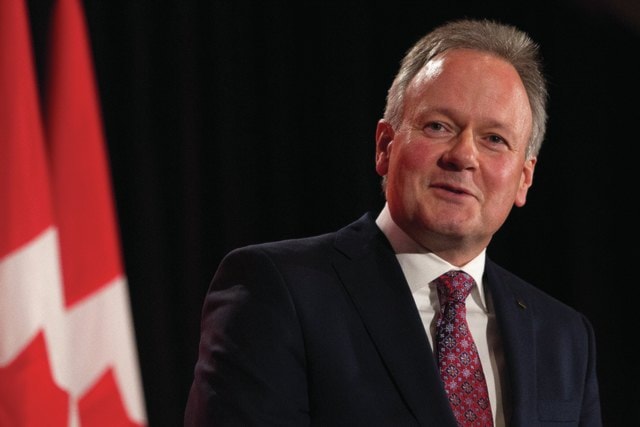The economy’s impressive run prompted the Bank of Canada to raise its trend-setting interest rate Wednesday for the third time since last summer — but looking ahead it warned of growing uncertainties about NAFTA.
The central bank pointed to unexpectedly solid economic numbers as key drivers behind its decision to hike the rate to 1.25 per cent, up from one per cent. The increase followed hikes in July and September.
While the central bank signalled more rate increases are likely over time, it noted the unknowns surrounding the future of the North American Free Trade Agreement — and the potential negatives for Canada — were casting a widening shadow over its outlook.
The bank said “some continued monetary policy accommodation will likely be needed” to keep the economy operating close to its full potential.
Governing council, it added, would remain cautious when considering future hikes by assessing incoming data such as the economy’s sensitivity to the higher borrowing rates.
For the move Wednesday, the bank couldn’t ignore the 2017 data, even as it acknowledged the risks about NAFTA’s renegotiation.
“Recent data have been strong, inflation is close to target, and the economy is operating roughly at capacity,” the bank said in a statement.
“Consumption and residential investment have been stronger than anticipated, reflecting strong employment growth. Business investment has been increasing at a solid pace, and investment intentions remain positive.”
Moving forward, the bank predicted household spending and investment to gradually contribute less to economic growth, given the higher interest rates and stricter mortgage rules. It predicted Canada’s high levels of household debt would amplify the effects of higher interest rates on consumption.
The rate increase by the Bank of Canada is expected to prompt Canada’s large banks to raise their prime lending rates, a move that will drive up the cost of variable-rate mortgages and other variable-interest rate loans.
OPINION:
Exports have been weaker than anticipated, but are still expected to contribute a larger share of Canada’s growth, the bank said. It also noted that government infrastructure spending has helped lift economic activity.
The Bank of Canada said the unknowns of the NAFTA’s renegotiation are continuing to weigh on its forecast and have created a drag on investment and exports.
“Today’s rate hike was a rear-view mirror move, but the Bank of Canada hints that the view out the front window isn’t quite as sunny,” CIBC chief economist Avery Shenfeld wrote in a research note to clients after the rate announcement.
“We share the Bank of Canada’s view that higher rates will be needed over time. But perhaps not as fast and furious as the market was starting to think. The bank’s statement put NAFTA uncertainties right up front.”
The Bank of Canada warned that lower corporate taxes in the U.S. could encourage firms to redirect some of their business investments south of the border. On the other hand, it predicted that Canada will see a small benefit from the recent U.S. tax changes thanks to increased demand.
The bank also released new economic projections Wednesday in its latest monetary policy report.
For 2017, it’s now predicting three per cent growth, as measured by real gross domestic product, compared with its 3.1 per cent prediction in October.
The bank slightly increased its predictions for 2018, up to 2.2 per cent from 2.1 per cent. It expects the economy to expand by 1.6 per cent in 2019, up from its previous call of 1.5 per cent.
The fourth quarter of 2017 and the first quarter of 2018 are each expected to see annualized growth of 2.5 per cent.
Governor Stephen Poloz raised rates in July and September in response to a surprisingly strong economic run that began in late 2016. The hikes took back the two rate cuts he introduced in 2015 to help cushion, and stimulate, the economy from the collapse in oil prices.
Up until a couple of weeks ago, many forecasters still had doubts that Poloz would raise the rate Wednesday. However, two strong reports — the December jobs data and the bank’s business outlook survey — led many experts to change their calls.
Heading into the decision Wednesday, Scotiabank Economics forecasted three hikes totalling 75 basis points throughout 2018 and three more in 2019. TD Economics expected a gradual pace of tightening over the next two years of about 25 basis points every six months.
The Bank of Canada stressed Wednesday that it would remain data dependent when mulling future rate decisions. The next announcement is scheduled for March 7.
Andy Blatchford, The Canadian Press
Like us on and follow us on .




.jpg)